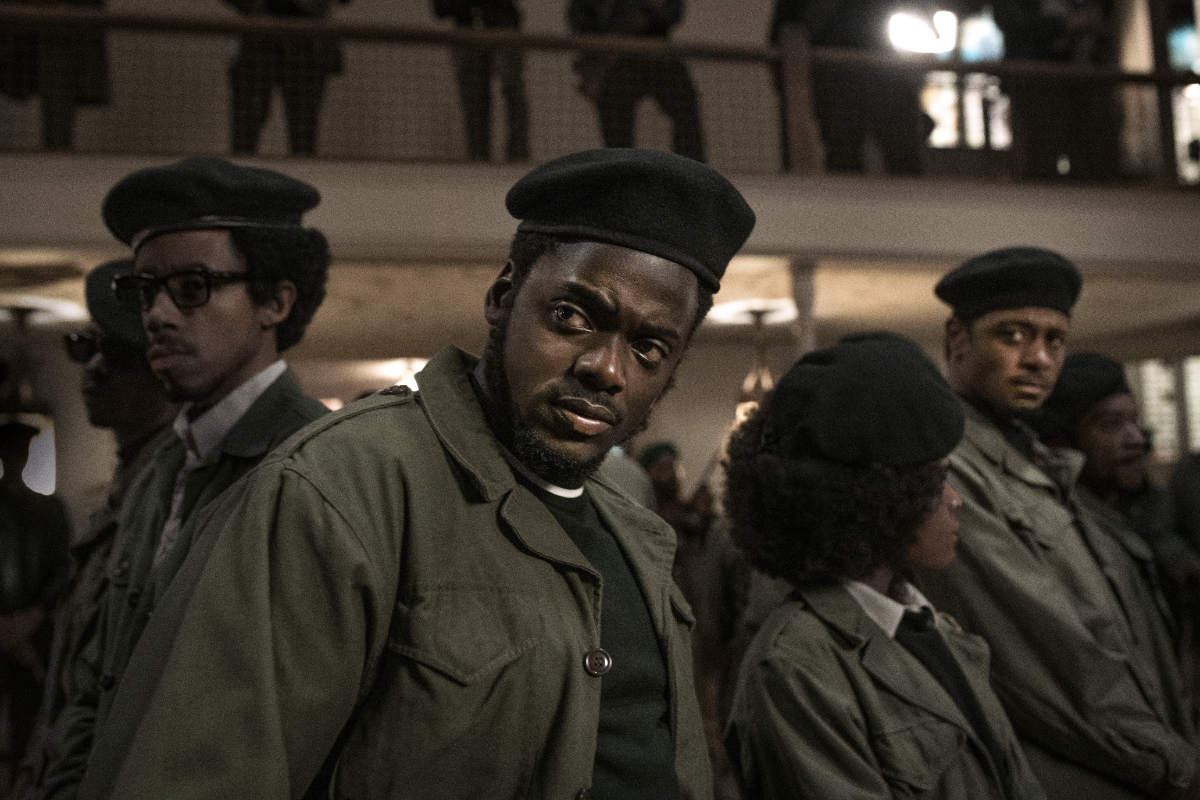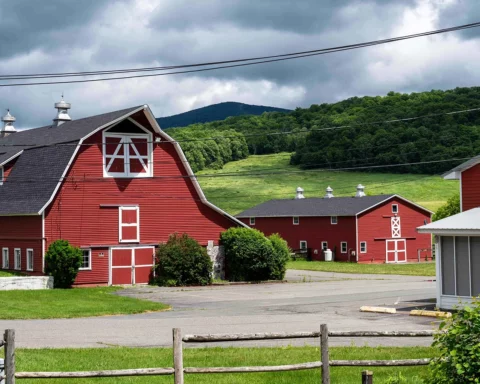BY DAN ATKINSON
For more than a year, the Massachusetts Department of Correction has been trying to build a new women’s prison. And for more than a year, activists with Families for Justice as Healing, an organization focused on ending the incarceration of women and girls, have pushed back on the project, pointing out issues with how the state is trying to get it off the ground, and in the process leading to officials twice pulling plans after FJH criticized them as trying to circumvent public scrutiny.
Now, the DOC has a third plan to get the prison off the ground, and as with the previous proposals, the department is promising the new facility will be constructed with “trauma-informed design to create welcoming and therapeutic spaces.” Families for Justice as Healing is fighting this proposal as well, arguing that prisons with “trauma-informed” care are not possible in the first place, and that the DOC is ignoring the voices of incarcerated and formerly incarcerated women who are advocating for community-based rehabilitation.
Prison reformers say this is a battle with consequences that could last for decades—with the state building a new prison to house children and grandchildren, instead of moving to decarceration.
“There’s no way you can build a trauma- informed jail.”
Stacy Borden
“We have alternatives, but they have their tunnel vision on building a new prison, on being stuck in those ways,” FJH member Ayanna Aubourg said. “This doesn’t just affect communities today, but generations to follow.”
Muffled Call for Bids Sets Off Alarms
At the end of 2019, the state’s Division of Capital Asset Management and Maintenance—which oversees construction and maintenance of state buildings—and DOC put out a call for a design team to look at the Bay State Correctional Center in Norfolk, a former men’s prison that has been closed since 2015. For $650,000, the team would look at revamping existing buildings and the possibility of new construction to create a prison for 200 female inmates, who would be relocated from MCI-Framingham. The request for designers estimated construction to cost $50 million.
State contracts must be publicly advertised in local newspapers, and members of FJH filed a protest after determining that hadn’t happened. DCAMM withdrew the bid before the protest was heard, but members of FJH said the lack of advertisement seemed like a way to avoid public scrutiny, and noted that the proposal had other problems—namely, its conception of “trauma-informed design.”
Institutional Doublespeak Mere Wellness Wash
“There’s no such thing as trauma-informed care in prison,” said Leslie Credle, who was incarcerated for five years, including a year at MCI-Framingham. “I say that because the atmosphere and environment inside prisons is toxic. When you first walk through the door, you are automatically humiliated, stripped of everything that makes you you. Every day you wear that uniform and that’s what you are, a name and number … It comes with a punitive approach rather than rehabilitative.”
“There’s no way you can build a trauma-informed jail,” said Stacy Borden, who was formerly incarcerated and started a nonprofit to create a residential treatment center in Boston. Borden said treatment in prison is inadequate. “How is giving you one hour a week trauma care? These men are trained to put you in a cell or a hole because you said something stupid, to strap you into a chair because you don’t know how to express emotions and they feel in danger.”
Credle, Borden, and other activists said they argued in favor of decarceration for years. They point out that state statistics show the number of women in prison decreasing by 35% over the past five years, and note that the proposal to create a new prison ignores the voices of those who are most affected—people in prison and their families. These attempts to build a new prison have seemed like even more purposeful ways to avoid hearing from activists.
Pre-qualification Keeps Contractor Selection Out of the Public Eye
Last August, DCAMM and DOC sent out a new request for prison plans. But this one was different from the bid for work at Bay State. The agencies were asking for firms to create a “Strategic Plan for Incarcerated Women in Massachusetts,” a seemingly broader scope. And instead of going through the public bid process, they used the “house doctor” method.
In this system, firms sign up and pre-qualify to be “house doctors” on call for state projects under broad categories like design or construction. The state then asks those specific firms to submit bids when projects come up, instead of putting the project out to bid through the public process. It’s a standard system for hiring consultants, but this prison project was put out under the house doctor contract for planning, study, and design for the state’s courthouses, not for prisons.
FJH once again protested, arguing the proposal’s scope was beyond existing house doctor contracts, and that by going through the courts, “DCAMM may have specifically solicited proposals from existing but substantively inapposite House Doctors in order to avoid further public scrutiny.” The proposal does not mention Bay State Correctional by name, but involves “identify[ing] priorities to guide investment decisions” and capital investment needs.
FJH leader Andrea James questioned why a strategic plan that ostensibly focused on policy was being farmed out to architects, suggesting new buildings would be a result of the plan. And she said the second proposal to go around the typical public process suggested the DOC was skirting oversight.
“It’s one of those two things—either they don’t have people with the right expertise in charge of this process, making very embarrassing bumbles, or you literally are trying to circumvent the process,” James said.
Lacking Reformist Input, Carceral Function Will Still Follow Form
The second request describes why the officials wanted to move inmates out of the Framingham prison in the first place—a 2012 assessment found that most of the facility was not up to code, and with “such a large number of substandard building conditions,” renovation would not work. Credle and other FJH members emphasized that Framingham’s conditions were terrible, but questioned why it took the DOC eight years after the study to act. (Ed. note: A recent investigation by the Boston Institute for Nonprofit Journalism detailed extensive abuses, as well as ongoing efforts to cover up attempts to expose improprieties). DOC did not provide a copy of the assessment upon request.
“Even if you have the best built, shiny new jail, the environment and atmosphere are not going to change.”
Leslie Credle
The second plan mentioned alternatives to incarceration, but also focused on methods to address trauma—”on-site women’s mental and medical health services, educational and vocational programs aligned with women’s interests, visiting area with a playroom for children, a family reunification program with overnight visits, substance abuse and trauma treatment programs.” But those can’t function as part of prison culture, Credle said.
“Even if you have the best built, shiny new jail, the environment and atmosphere are not going to change,” she added. “You’re traumatizing women every day, inflicting harm on them mentally. We don’t need a new prison. We did a listening tour with 100 formerly incarcerated women. They say prison did nothing for me, nothing to change whatever they thought was wrong.”
The second proposal mentioned input from “Criminal Justice Reform advocates,” but not specifically the formerly incarcerated—or inmates themselves. That’s part of the larger issue, James and other activists said. Incarcerated and formerly incarcerated women speak up—about conditions at Framingham, the inefficacy of programs, the overall push for decarceration—and are ignored.
James is the formerly incarcerated representative on the state’s Justice-Involved Women Panel, which is made up of legislators and public health and law enforcement officials. It’s been working on a report about policies around incarcerated women, but James said the second bid and DOC’s desire to build a new facility bypassed their work.
“We are working on what’s best for incarcerated women and yet on this other track over here, as if it’s almost oblivious, before we’ve even put out our recommendations the Department of Correction is barrelling ahead with building a new women’s prison,” James said.
Families for Justice as Healing protested the second bid as well, and the Attorney General’s Office called for a hearing in early December. But days before the hearing, DCAMM withdrew the second bid, and the AG’s office canceled the hearing. A spokesperson for the AGO said the office reviews bid protests on a purely legal basis without taking policy views into account, and does not review bids that no longer exist but will review protests for active bids.
Reform advocates were disappointed in the AG’s office, and wanted to see a ruling that addressed how the courts’ house doctor contract was used for a prison project. But according to FJH Program Director Ayana Aubourg, they also saw it as a way to push back on the larger project.
“Our sisters and members were prepared to present at the most recent meeting in December,” Aubourg said. “These hearings are the only opportunity we have to express our expertise. That’s terrifying because of the harm DOC puts on our communities.”
Warmed-over Plans for Carceral Facility Resurface
The group was additionally concerned that the withdrawal would pave the way for yet another proposal, and a few weeks later, DCAMM and DOC released two new bids. One was for a “Strategic Plan for Incarcerated Women in Massachusetts,” which uses much of the same language as the bid that was released in August before being pulled in December. The project is expected to take five months, according to bid documents.
At the same time, the DOC put out a bid for the “Study and Design of a Correctional Center for Women,” with an estimated cost of $550,000. This study would run concurrently with the one creating the strategic plan for incarcerated women. And while the strategic plan is open ended, this study has a specific goal in mind, according to the bid documents: “While other site alternatives may also be considered, at the present time, Bay State Correctional Center has been identified as the only potential site in the event the Designer demonstrates that the Project goals cannot be achieved within MCI Framingham and South Middlesex Correctional Center.” Instead of $50 million, though, officials estimate the project costing between $20 million and $40 million.
Once again, the bids refer to items like visiting areas with playrooms and vocational and substance abuse programs. And a certain phrase re-appears: “The Project must utilize the principles of trauma-informed design to create welcoming and therapeutic spaces,” the bid for designing a correctional center reads. “Landscape design should be incorporated to play a role in breaking down the institutional feeling of the correctional center by generating an outdoor environment of healing and peace in a safe and inspiring way. The Designer is expected to capitalize on an effective process to create a correctional center that contributes to the health, wellbeing, and rehabilitation of its occupants.”
Borden and Credle said that language is not just contradictory in suggesting a prison can be “trauma-informed,” but it ignores the other issues surrounding incarceration that would be better addressed with the $20 million—or $40 million, or even $50 million—spent on a new jail. Borden’s rehabilitation program will focus on art as therapy to help formerly incarcerated women overcome the trauma of prison and abuse, and Credle runs Justice 4 Housing, which works to provide co-op housing for people recently released from prison.
Recidivism Drafted into the Blueprints
“When you come out they set you up to go back,” Credle said. “Probation and parole but you have no money or car, no home. They expect you to find a job, come down here every two days and piss in a cup. It’s a revolving door, that’s how they want it.”
The state legislature recently passed the Primary Caretaker Bill, which helps keep women with dependent children from going to prison and losing custody. Still, separated families remains a huge problem, Borden and Credle said. Community groups helped advocate for the Primary Caretaker Bill, and they’re better-equipped to address rehabilitation, they said.
“If you want to talk about building something significant, build it in the community with people who’ve improved their lives,” Borden said.
“You have all the money for policing and prisons, but unless you invest in the community you’re wasting your money,” Credle said. “Taxpayers are paying billions of dollars to a system that is broken. We can change the system but they don’t want to give up the power.”
And the compressed timeframe for creating the strategic plan, with the study of new construction running alongside it, means community groups and decarceration advocates will likely be shut out again, Aubourg said.
“There is this whole piece around community engagement, a rough timeline of five months to engage with the community,” Aubourg said. “We don’t feel that allows enough time with community engagement. Nowhere in the RFP does it emphasize the need to speak with the incarcerated or formerly incarcerated, that has been very frustrating to us.”
And the push for another prison is especially demoralizing to residents of the corridor from Roxbury to Dorchester that has the most incarcerated people in Massachusetts, James said—telling them that the state is building a new prison to hold neighbors and family members.
“When you talk about building new prisons, you are putting out the message that those of us that live in these communities that you are intending future generations to be in those beds,” she said. This is morally irresponsible and fiscally irresponsible.”
Spokespersons for DCAMM and DOC said no final decisions have been made on the bids or on the future of MCI-Framingham. James said Families for Justice as Healing was consulting with legal experts but is also prepared to protest the state moving forward with its plans.
Reform Activists Determined to Stay Golden Shovel on Iron Bars
“We have to think about how we are going to derail it again. We just have to keep finding ways to challenge what they’re doing,” James said. “We continue to pull out legal teams, but we are organizers. If this ramps up and moves to putting shovels on the ground for what they consider a ‘trauma-informed prison for women,’ we move into other modes of organizing around this, engage it as 10 toes on the ground.”
As the group moves into its second year of fighting plans for a new women’s prison, with the third round of proposals put forward by officials in play, James said the state needs to move beyond its old models and listen to what community activists are demanding.
“We need to think about how to respond in a meaningful way, as opposed to the gall of thinking that during a pandemic we need to continue as fully as possible to maintain a fully-operating women’s prison when there’s so much more available to us,” James said.
This article was produced in collaboration with the Boston Institute for Nonprofit Journalism.









